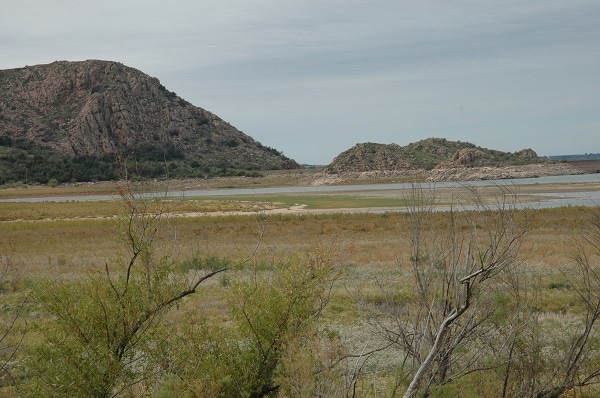
Oklahoma will produce ‘some’ good cotton this fall.
“Four-bale yields are possible in some areas, where they had adequate, good quality water,” says Randy Boman, research director and cotton Extension program leader at the Oklahoma State University Southwest Research and Extension Center in Altus.
The area around Altus, however, did not fare as well. “Rainfall has totaled less than 50 percent of normal over a three-year span,” Boman says. “No irrigation water was allocated from 2011 through 2013. We’ve had three years of failed crops.”
He says the district’s water source, Lake Lugert, was at 22 percent capacity in 2011. “It’s at 12 percent now.”
If you are enjoying reading this article, please check out Southwest Farm Press Daily and receive the latest news right to your inbox.
Cotton fields as near as 30 miles from Altus are producing better cotton. “Areas north and northeast of Altus look a lot better. We’ve had 24 inches of rain at my house since late April. The overall situation in Oklahoma is better.”
But a good portion of the 150,000 planted acres will be abandoned. Boman expects harvested acreage to be no more than 125,000, if that. “But there will be some good cotton harvested.”
He says cotton acreage was down significantly this year following several years of increase, peaking at 415,000 in 2011. Two-dollar cotton and favorable insurance coverage, he says, encouraged farmers to plant cotton.
“But now we’ve had a run of bad weather that affects yields and will affect average production history (APH). Farmers can use yield plugs, but the reduced yield will hurt. Premiums will go up.”
And it costs more to grow cotton with increases in fertilizers, chemicals and other necessary products.
Boman says many of his large-scale variety trials—Replicated Agronomic Cotton Evaluation (RACE)—fields also failed this year, but the irrigated trials away from Altus “did okay.”
He’s also looking at root-rot control tests using Topguard fungicide. “It’s hard to put a handle on where root rot is causing damage,” he says. “Some areas have followed a sound rotation program over the years and that has helped, but where farmers do have it, it’s a big deal. We need a root rot control product on the market.”
Boman is concerned for the long-term effect of continued drought. “It affects gins, elevators and co-ops. In 2011, the situation was terrible. In 2012, it was very bad and 2013 is better for some folks but still bad for others.”
Timely rainfall helped some. And fall rains have allowed many to establish cover crops. “We got some cover established this fall. A lot of growers have adopted no-till and are growing cover crops. Even in 2011, many had enough fall rain to get a cover crop in. It’s good to see some green.”
Also of interest on Southwest Farm Press:
Drought effects still being felt in southwestern Oklahoma
About the Author(s)
You May Also Like






